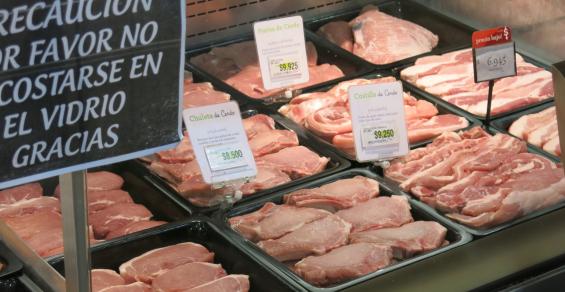Hog Outlook: Maintaining current markets and entering new countries keeps demand strong for U.S. pork.
Americans consume more than 50 pounds of pork per person each year, and while the U.S. consumer can always improve their pork intake, we need the rest of the world to place pork at the center of their plates.
According to the Pork Checkoff, in 2020 exports accounted for 29.3% of total U.S. pork and pork variety meat production. It is estimated that more than $58 of every hog sold in the U.S. can be attributed to export value.
On the world stage, China, which produces half the hogs in the world, is also consuming half of the world’s pork. In 2020, China and Hong Kong brought in 2.283 billion pounds of U.S. pork, according to the Pork Checkoff.
U.S. pork reach
Skimming headlines tells how fickle the global situation can be. Free-flowing exports one minute can have trade gates slammed shut the next. That means continued work is needed to maintain the markets that currently welcome U.S. pork, while also creating new marketing partners.
According to the U.S. Meat Export Federation, pork exports trended lower in December 2021, falling 17% from the previous year to 215,872 metric tons, valued at $604.3 million (down 12%). For 2021, export volume was 2.92 million mt, down 2% from the 2020 record, but export value still climbed 5% to a record $8.11 billion.
USMEF data shows that record pork exports to Mexico, Central America, the Dominican Republic, Colombia and the Philippines helped offset a decline in demand from China in 2021. Exports also increased to Japan and South Korea, including larger volumes of chilled pork. Global exports of U.S. pork variety meat set a new value record of $1.24 billion, up 19% year-over-year.
New pork partners
Drumming up new business for U.S. pork is, and should be, a continued mission for the pork industry. In January, U.S. pork made headway into new markets — India and Nigeria.
India, home to 1.26 billion people, has potential to be a huge market for U.S. pork, as the U.S. product will now be allowed import into India. Of course, not all people will eat pork, but a small percent of 1.26 billion people is still a big number.
Nigeria, with just over 211 million people, also offers a lot of potential new pork consumers. The National Pork Producers Council notes that Nigeria has the largest GDP of any African country, and pork is positioned well to garner that income by being the first U.S. protein in the market, exporting sausage and similar products. Other U.S. pork products, as well as beef and poultry, still remain ineligible for export to the African nation.
The global political landscape continues to include obstacles the U.S. pork industry needs to overcome, namely facing larger tariffs than those faced by competing countries. Breaking down these barriers will allow U.S. pork to become center of plate for consumers around the world, allowing them more access to the affordable, wholesome and nutritious product.
That is good for the world, and it’s good news for U.S. pork producers.
Schulz, a Farm Progress senior writer, grew up on the family hog farm in southern Minnesota, before a career in ag journalism, including National Hog Farmer.




